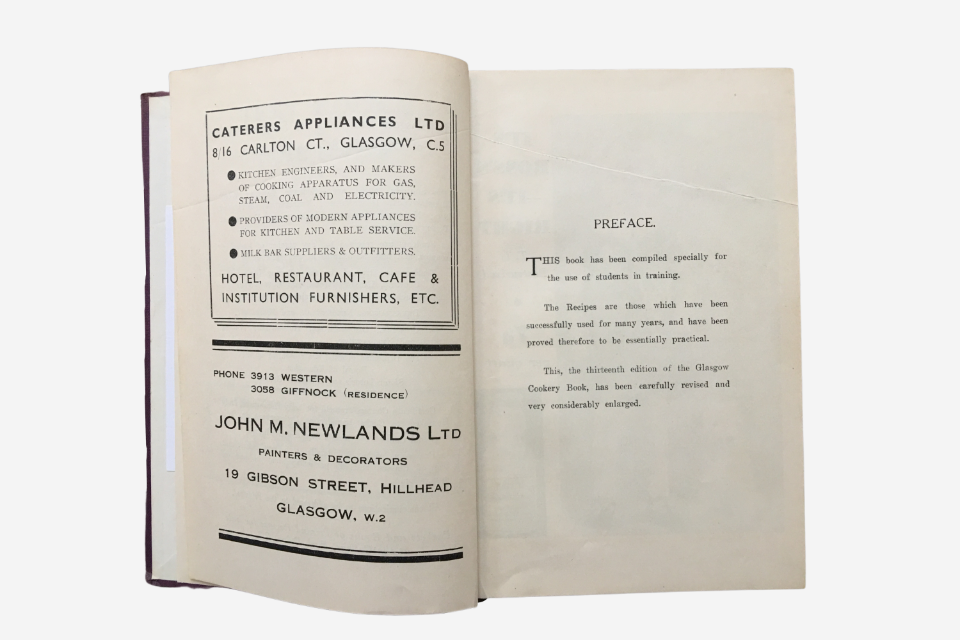Amongst the pages of local advertisements
At the beginning of the book, hidden amongst pages of local advertisements, is the preface introducing the thirteenth edition. Despite only first being published some thirty years earlier, the cookbook had already been republished multiple times and extensively revised. For a local domestic College, this level of repeated, meticulous curation and review is quite impressive.
The College was large, and its popularity and high enrollment rates can be linked to the fact that during the late 19th and early 20th century, industrial regions such as Glasgow had a population that could utilize -- and benefit -- from the establishment of a domestic college.
Urban areas in Scotland that grew as a consequence of the industrial revolution generally saw workers earning lower wages in comparison to workers in the rest of the UK (Knox, n.d.). In cities such as Glasgow, which saw rapid urbanization during the industrial revolution, wealthy philanthropists often set up domestic colleges to educate the substantial working-class population, most of whom had relatively low levels of education. Hence, the purpose of the Domestic College in Glasgow and its respective textbook was to educate young women (and occasionally, young men) in domestic skills en-masse (“Dough School”, 2009). As a result, it effectively standardized cooking methodology and recipes across the city and in turn, across the country.
